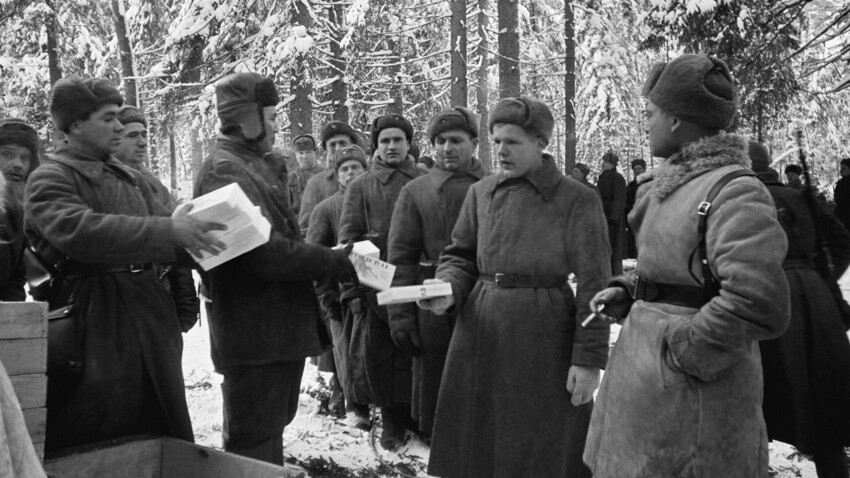
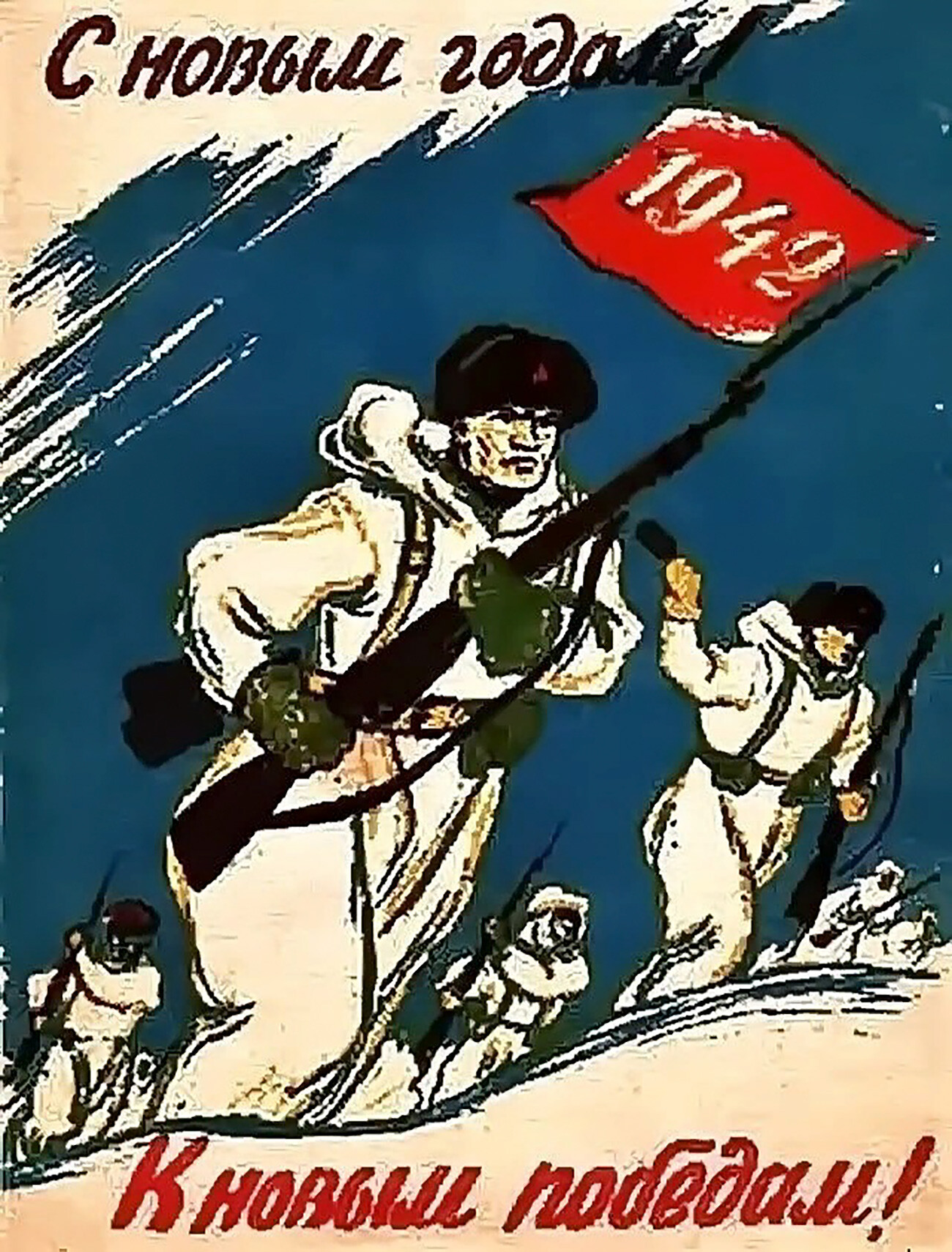
The customary hallmarks of the Soviet festive season – a decorated New Year tree and presents under it – seemed to have been left far behind in the rear during World War II. But servicemen did their best to try to recreate some sort of New Year atmosphere. If they couldn't find a New Year tree, any other tree would do – they would put handmade decorations on it made from bandage gauze and canned food labels, while a candy in a colorful wrapper could be placed on top of the tree instead of a star. In the run-up to New Year, there was a steady flow of postcards and letters to the front from the rear: In the Fall of 1941 alone, the Iskusstvo (Art) publishing house in Moscow printed 300,000 New Year greeting cards and, throughout winter, about 15 million cards were made, in total. They depicted scenes from everyday life at the front, caricatures of Hitler's soldiers and, naturally, Russia’s ‘Santa Claus’, ‘Ded Moroz’ (aka ‘Grandfather Frost’) defeating the enemy.
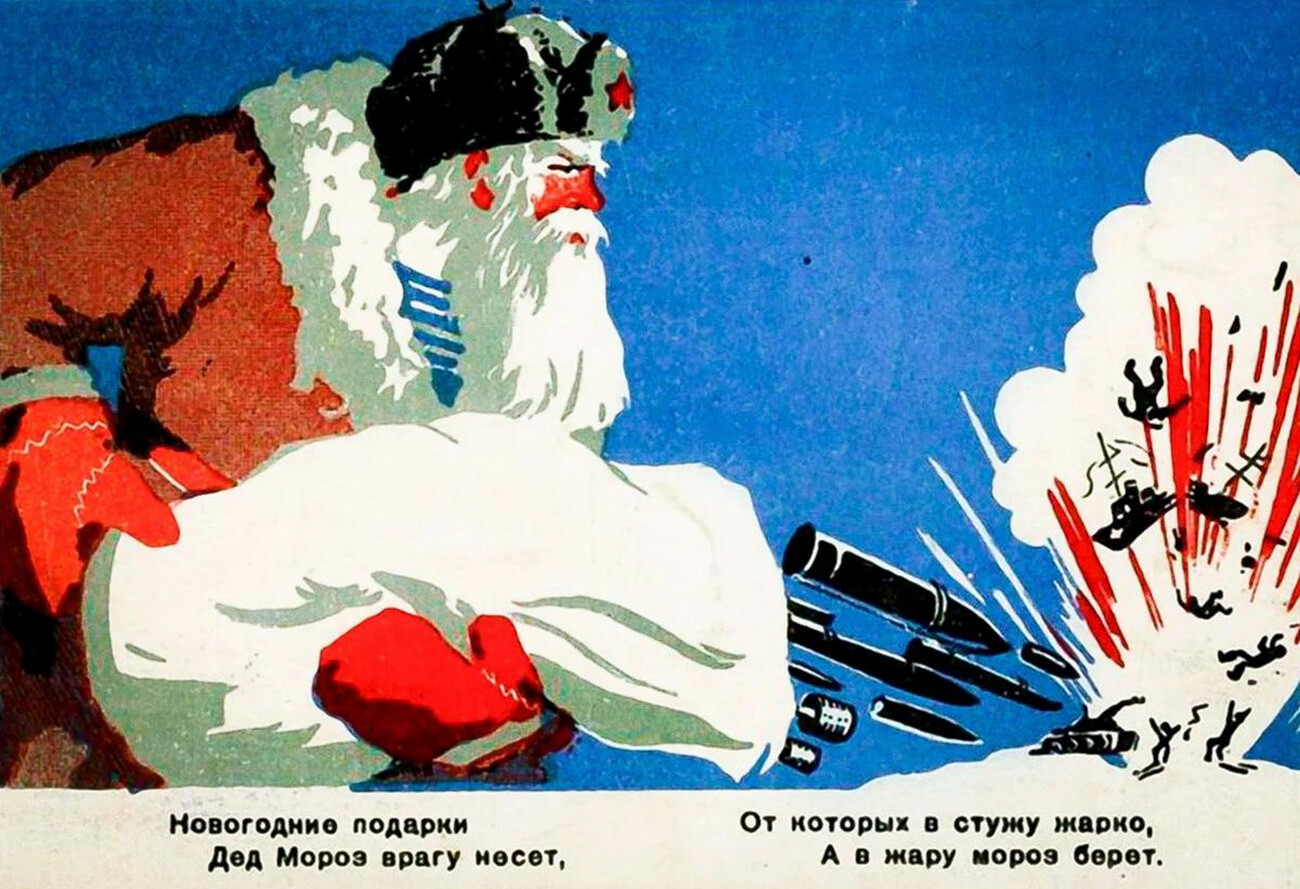
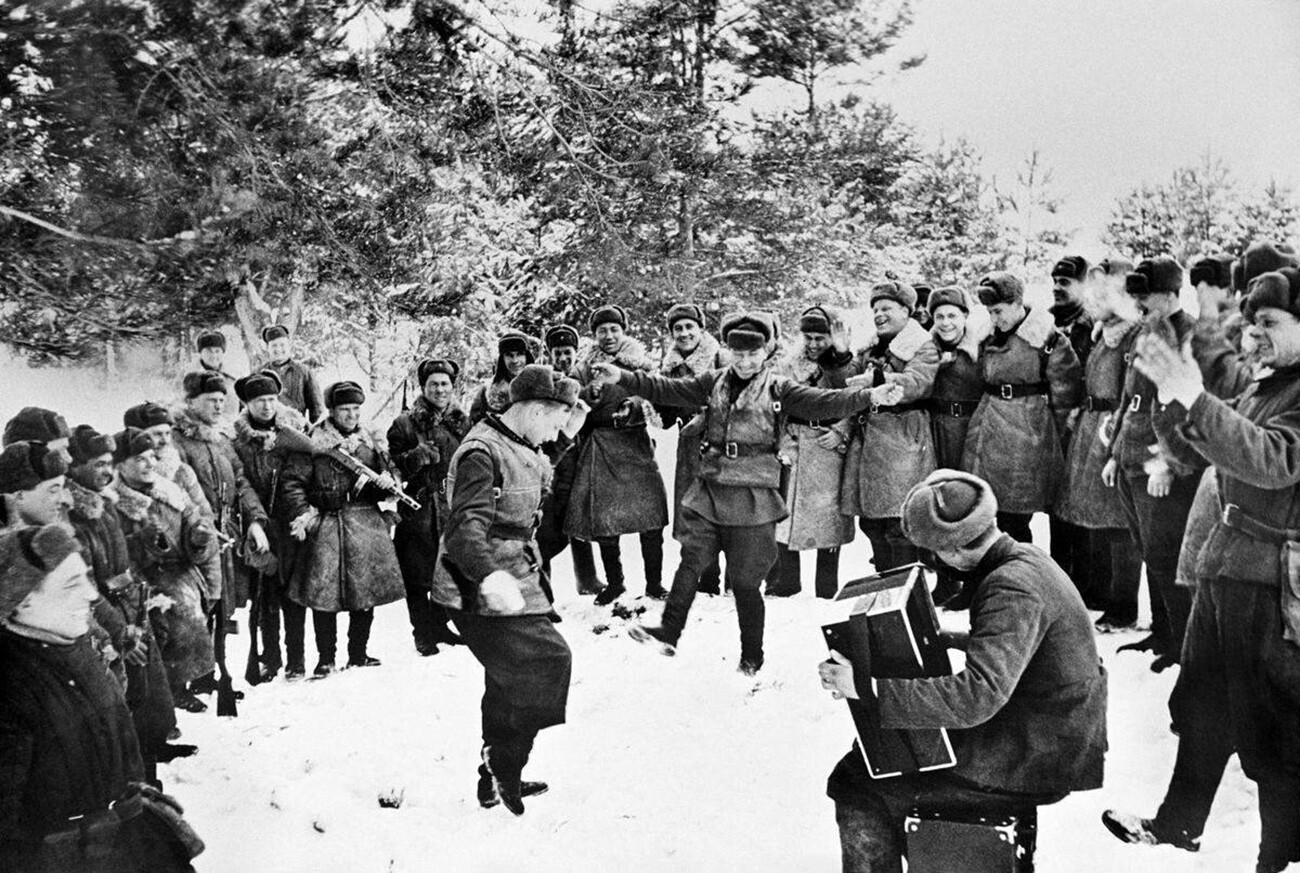
Soldiers celebrating New Year in Moscow region, 1942
Archive photoThousands of parcels would be sent to the front for New Year: It was a way in which people remaining in the rear could support their nearest and dearest. They would put together the most important essentials: warm socks and mittens, felt boots and wadded jackets, tobacco and hand-embroidered tobacco pouches, writing paper, cigarettes, candies and biscuits. State farms, factories, schoolchildren and adults would also take part in preparing presents. They dried vegetables, baked gingerbread and cookies and processed meat into salami.
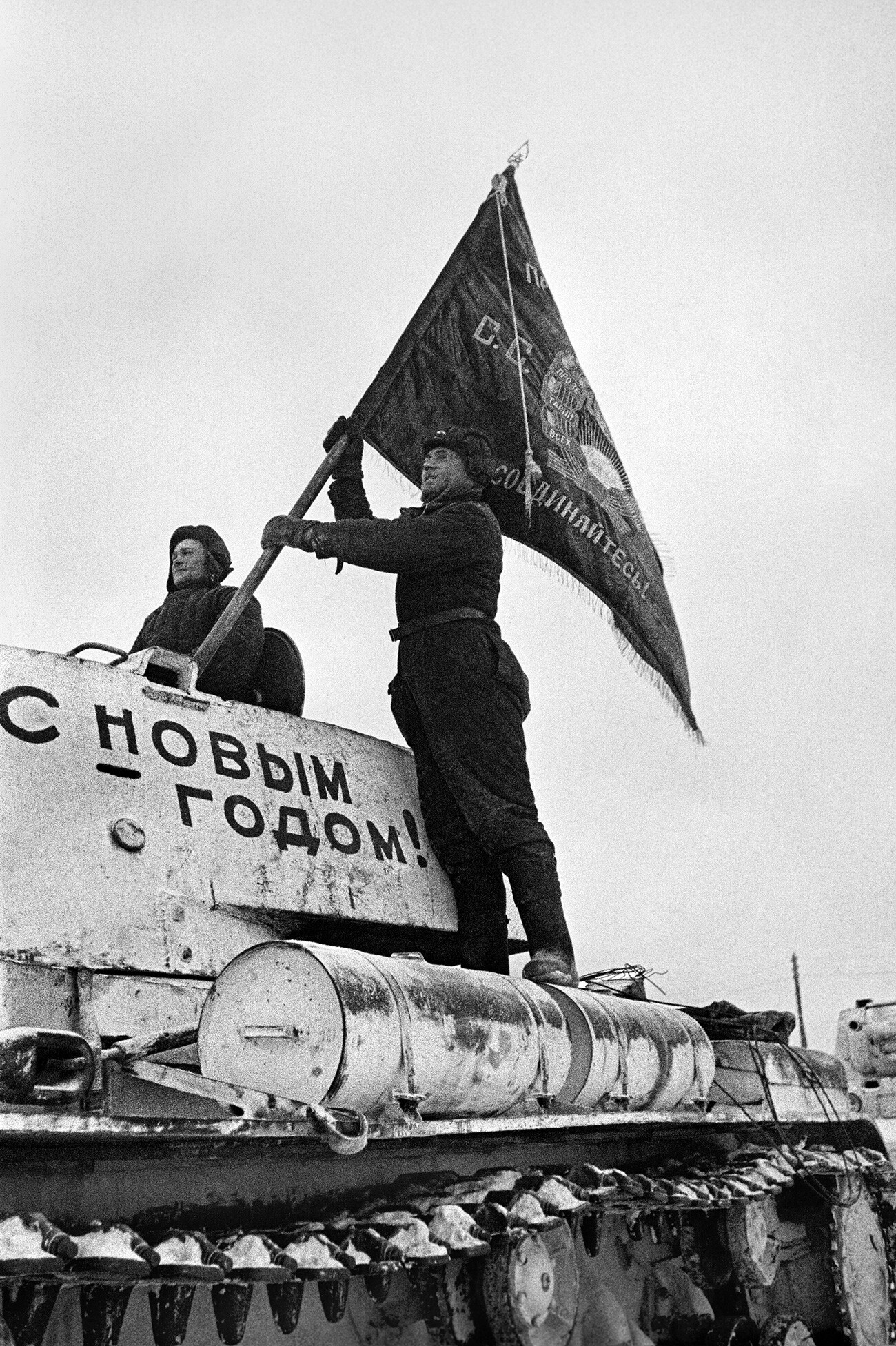
Collections of food and clothing were organized in towns and villages: In December 1941 alone, 11 tons of various cookies, candies, salamis and apples were sent from Kuybyshev to the North-Western Front. "The miners of the North Urals bauxite mines are very lovingly preparing New Year presents for the defenders of the motherland. The first batch – comprising 400 parcels – has already been dispatched. The parcels include wine, cookies, cigarettes, tobacco, candies, chocolate, sausages, etc," said a report of the time published in the 'Karpinsky Rabochy' (‘Karpinsk Worker’) newspaper. People would frequently travel from the rear to the front, in order to personally wish the soldiers they met a Happy New Year and present them with gifts.
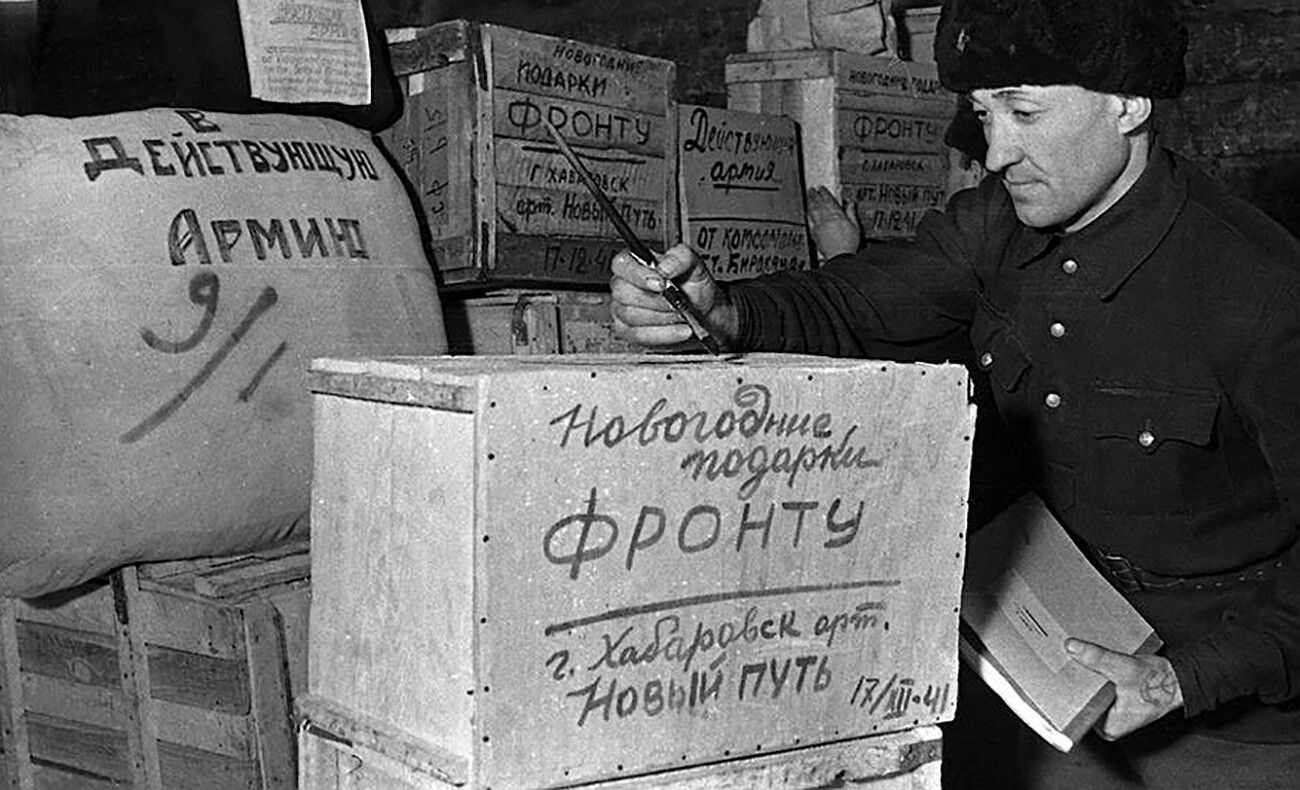
In addition to useful gifts, sweet treats were also placed in the parcels. Many confectionery plants were evacuated to other regions in the war years, where they continued production. Chocolate, for instance, was part of the mandatory ration for airmen and submariners and ‘Gvardeyskiy’ and ‘Kola’ chocolate (with kola nut extract, which was regarded as a tried and tested tonic and protected against vitamin deficiency) was included in the New Year parcels. Leningrad's ‘Krupskaya Confectionery Factory’ continued to operate: In 1943, it started making ‘Mishka na Severe’ (‘Bear in the North’) candies – as much as three tons came off the production lines in just one year.
New Year presents were even festively gift-wrapped: They were placed in small canvas bags with the embroidered inscription: "Defender of the Motherland".

Sometimes, festive feasts appeared out of the blue. In late December 1942, after Soviet troops had liberated Kotelnikovo station near Stalingrad, they discovered railcars that had been abandoned on the tracks by the Germans. And they were full of luxury foods. Pavel Rotmistrov, commander of the 7th Armored Corps, decided they would be perfectly suitable for seeing in the New Year. Tables overflowing with food, schnapps and champagne were quickly laid. To complete the celebration, Joseph Stalin's congratulations on the victory and Near Year wishes were read out to the troops.
But, sometimes, ordinary potatoes would have been enough to generate a festive mood. According to one soldier's recollections, a New Year celebration was organized for his detachment before it was to be deployed to Stalingrad: Conserved frogs' legs and turtle egg omelets appeared on the tables in the dugouts – evidently “trophy” dishes. The soldiers were unaccustomed to such “exotic” foods, so they didn't eat the frogs' legs and only extracted the rice garnish from the tins.
Dear readers,
Our website and social media accounts are under threat of being restricted or banned, due to the current circumstances. So, to keep up with our latest content, simply do the following:
If using any of Russia Beyond's content, partly or in full, always provide an active hyperlink to the original material.
Subscribe
to our newsletter!
Get the week's best stories straight to your inbox